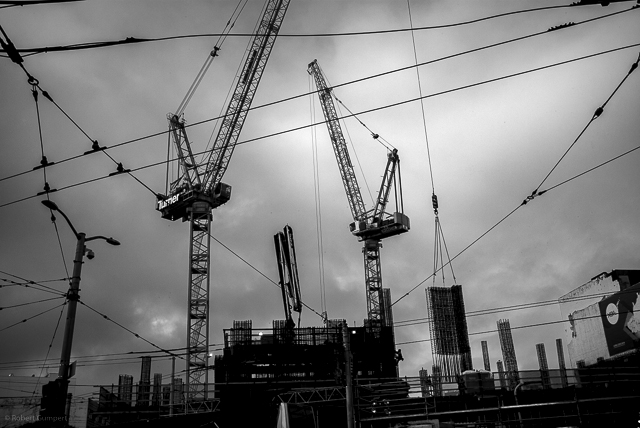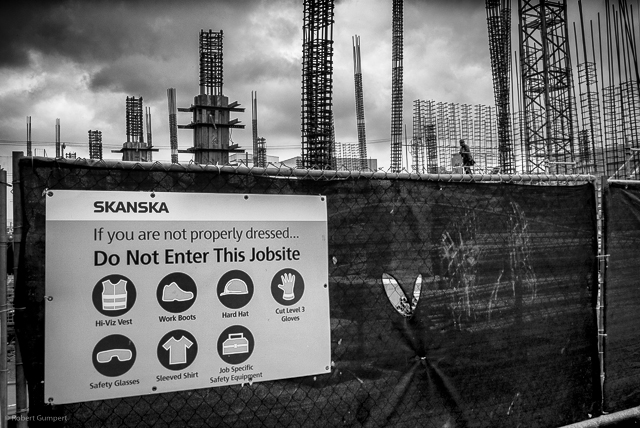COVID 19 in the construction industry: Dueling instructions: Be safe, but not if it impedes production
By Noah Carmichael

As a union organizer, there are the obvious daily obstacles to getting folks to recognize that they can do something about their working conditions. Whether that calls for directly demonstrating collective power to correct safety issues immediately on a non-union jobsite, or joining an already established bargaining unit, is up to the workforce. Those endeavors are winding roads – full of intricacies that are almost never linear. Anyone who has ever done any type of workplace or community organizing knows all about the irregularities and complex human dynamics at work. Now add to that the layers of confusion that are presented by the outbreak of a virus that requires stay at home orders for probably 50% of the population and creates hazardous conditions for the other 50% which are either expected to/or required to work. Construction at this point, is a maze of concern, confusion, fear, indecision, solidarity and leadership.
My experience in the construction industry, in Northeast Ohio, has mirrored the chaos. Governor Mike DeWine listened to scientists and doctors in March and issued a stay at home order earlier than many other states. Nevertheless the exceptions and exemptions have proven to be precarious at times, simultaneously demanding caution while putting workers in peril. Even though many building trades members and representatives in Northeast Ohio have experienced slowdowns, for those that remain in the workforce the questions still linger; “How do we keep a 6-foot distance from each other if we are building something together?” “If healthcare workers are struggling to find masks, will there be enough to protect construction workers from the virus, or the other hazardous materials that they are exposed to?” “Will there be adequate handwashing stations on construction sites?” And “what impact does this have on collective bargaining agreements?” These are all questions that good union stewards should be asking, and safety measures that all good union representatives should be demanding that General Contractors and Construction managers provide. As for now, there are few answers to these questions, and little to no help from Federal and State government to address them.

Workers are always told to be safe and put their health first, and then soon after asked to do something that directly flies in the face of this policy. For instance, a group of bricklayers in Northeast Ohio was asked to gather in a trailer for a 15-minute jobsite orientation on a school project by the construction manager. Immediately the proximity of the gathering raised concern for the members, and they brought the issue to the job steward, who then told the CM that he didn’t think this enclosed meeting was a good idea. He suggested that they either have the meeting outside, or to just share the material with the members electronically. In this instance, outstanding solidarity among members and good stewardship allowed common sense to prevail and the meetings to cease. It is easy to imagine however, how many times this type of unsafe activity goes unchallenged. Particularly in a non-union workplace.
Another example of this is that two of the largest, wealthiest, contractors in the Midwest are squabbling over face masks and gloves. One (a top ten nationally ranked construction manager) the other, (one of the largest restoration contractors in the Midwest) put workers directly in the middle of a dispute over who will pay for PPE. The construction manager took aggressive and bold steps for worker safety by setting up hand washing stations and demanding that safety masks and face shields be provided, but then put the burden of obtaining the masks solely on the subcontractor, who then put it on the workers. As so often happens in the workplace, the mantra seems to be: “Be safe, so long as it doesn’t inconvenience management or production.” There are other examples, and some far worse to be sure.
Union Organizers and Reps have their hands full trying to adequately represent their own membership during this ever-changing crisis. Rules change constantly – things not contained in Collective bargaining agreements must be revisited and policies added for safety to prevail. As an organizer at heart, I think that when the crisis subsides, the workers will remember how they were treated by employers and managers. This makes it even more important to be remembered as the ones that stood up for them. Stay safe brothers and sisters. Be sure to look out for one another.
…